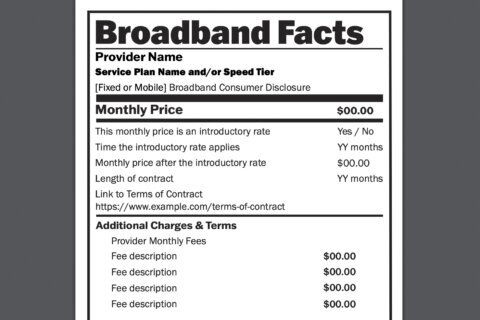Many workers leave a 401(k) or 403(b) retirement plan behind after switching jobs for one of two reasons: they didn’t know what to do with the account or they never got around to calling the plan provider to have the funds rolled over into an individual retirement account. For individuals in industries where turnover is common (such as biotech), leaving behind a string of old retirement investment plans can become a real problem — potentially impacting your retirement goals.
In most instances, rolling funds out of an old 401(k) plan and into an IRA only takes a matter of minutes. However, for some investors, the sticking point stems from a murky understanding of the drawbacks of keeping funds in old retirement plans.
It’s way harder and more time-consuming to manage multiple retirement plans. Every retirement plan is essentially its own financial ecosystem. Each plan will have a unique fund lineup (which changes periodically), administrative procedures and expenses, online system and login, and financial institution where the retirement funds are held.
[See: 11 Steps to Make a Million With Your 401(k).]
If you’re staying on top of your retirement savings, you’ll need to log in periodically to monitor the fund changes and rebalance your portfolio. If you leave your old 401(k) behind, you’ll need to repeat this process at each retirement plan or financial institution.
Setting up and managing an asset allocation can be quite difficult across multiple plans. Investors will want to evaluate their respective fund lineups to determine which plan has a superior fund or ETF for that component of their asset allocation (e.g. small-cap equities or international developed markets). By setting your asset allocation at the portfolio level (all of your investments combined) instead of an account-by-account basis, investors can help ensure they’re using the best funds available to meet their objectives, while keeping fund expenses in mind. Of course, this makes rebalancing a much more complex and time-consuming math exercise.
Unfortunately, what typically happens in practice is the old account will become neglected and can remain in its current state for years at times. Investors who selected a target date fund may avoid some of the usual consequences stemming from an ignored account, however, there is a cost for the service.
Target date retirement funds can be a good way for hands-off individuals to invest in a ready-made diversified portfolio; however, without further research there’s no telling whether the chosen date is appropriate. Further, expense ratios tend to be much higher in target date or actively managed funds, which eat directly into your return.
Disorganization is a major cause of financial stress. As a financial advisor, I speak with a lot of different people about their current financial situation. There are a handful of common issues that always seem to rise to the top of the “money concerns” list, at every asset level. Financial disorganization and maintaining too many accounts are, without question, some of the most commonly cited stressors.
Having all (or at least substantially most) of your accounts at one financial institution may seem minor, but it is a critical part of personal financial management. Without it, it is difficult to know where you stand financially without logging into multiple portals. Developing a cohesive investment strategy is also very challenging operationally (see reason No. 1 above).
When daily life always seems to overcome a financial to do list, as time passes many investors find they can’t keep up with proper account management, which can become overwhelming. As the concerns and undone tasks pile up, it can be tempting to start ignoring the situation altogether.
[Read: 5 Ways to Spice Up Your 401(k) Plan in 1 Day.]
When possible, it is usually advantageous to simplify your financial life as much as possible. This can include setting up automatic transfers to goal-based saving or investment accounts to consolidating your accounts at one or two financial institutions. Simplicity can save a lot: time, headaches, even money.
You may be limiting your investment choices — and potentially your returns. Every plan will have a unique fund lineup, where plan participants can choose their investment options. Some plans offer a wide range of mutual funds and ETFs, while others will have a much more limited menu, perhaps only consisting of costlier investment options. As these choices change, investors should review their choices as an existing fund may be phased out or an improved option now available.
When you roll your retirement plan assets over to an IRA, you’re no longer subject to the investment constraints of your old 401(k) or 403(b) plan. You can choose a financial institution where you’d like to open an account (e.g. TD Ameritrade or Vanguard) and their whole platform of investments will be available to you.
The benefits of this can be significant. Perhaps your old retirement plan only included poorly-rated or high-cost funds for a certain asset class of your portfolio, such as real estate or international emerging markets. In your old plan, you would have to decide whether to select a sub-optimal fund or forgo that part of your desired asset allocation. When you have virtually no restrictions on what you can select for your portfolio, those issues are resolved.
Another important benefit of choosing from a vast universe of investments is having more control over your costs. A 401(k) plan has an embedded administrative expense to plan participants as a result of everything that is required to administer the plan and comply with ERISA regulations. An IRA doesn’t have that extra layer of regulation and cost. Further, as discussed at length, participants are limited to the funds offered in the plan and their respective expense ratios. All of these costs are taken directly from your investment returns (or added to your losses), making costs a major consideration in the 401(k) rollover equation.
Other considerations. Depending on your situation, there may be other factors for you to consider before deciding to roll your old 401(k) assets into an IRA. Here are a few:
— “ERISA-qualified” retirement plans (e.g. a 401(k)) enjoy enhanced creditor protection in an individual’s bankruptcy estate compared to an IRA. However, if separate accounts are established for each rollover, legal experts generally agree that rollover assets can maintain the unlimited creditor protection of the ERISA-Qualified plan it originated from. Consult an attorney for the most comprehensive guidance on your situation.
— Penalty exceptions differ between a 401(k) and an IRA. If you roll your retirement funds into an IRA, you will be subject to a new set of penalty exceptions, set by the IRS. For example, a 401(k) doesn’t allow for penalty-free distributions for qualified higher education expenses, but an IRA does. On the other hand, funds in a 401(k) can be accessed as early as age 55 without penalty (provided you’ve already terminated employment), whereas funds in an IRA are off-limits until age 59½.
— Roth 401(k) contributions or after-tax additions will need to be rolled into a Roth IRA. If you have made both pre-tax and after-tax contributions, you will need to open two new accounts (a traditional IRA and a Roth IRA) to rollover the funds. The good news is that Roth IRA’s aren’t subject to required minimum distributions at age 70½, whereas Roth 401(k)s are.
[See: 7 Things You Need to Understand About Your 401(k).]
Remember, if you’re considering rolling over your old 401(k) or 403(b) to an IRA, be sure to set up your new IRA in advance and request a direct rollover. With a direct rollover, the funds will be made payable to the financial institution where you opened the IRA, for your benefit. If the check is made payable to you it will be subject to an automatic 20 percent federal withholding, and potentially an additional 10 percent penalty on the amount withheld.
Although it can become complex in certain situations, for the majority of ex-employees the rollover process is fairly streamlined. Some plan providers now allow for rollover requests to be made through their online system. However, if you have any questions or concerns about the process, it is advisable to contact your HR department, plan provider, or financial advisor before requesting any changes.
More from U.S. News
The Top 10 Dow Jones Dividend Stocks
7 Founder-CEOs Doing Fabulously for Shareholders
10 Reasons Warren Buffett Is a Better Investor Than You
3 Reasons Investors Shouldn’t Leave the Old 401(k) Behind originally appeared on usnews.com







